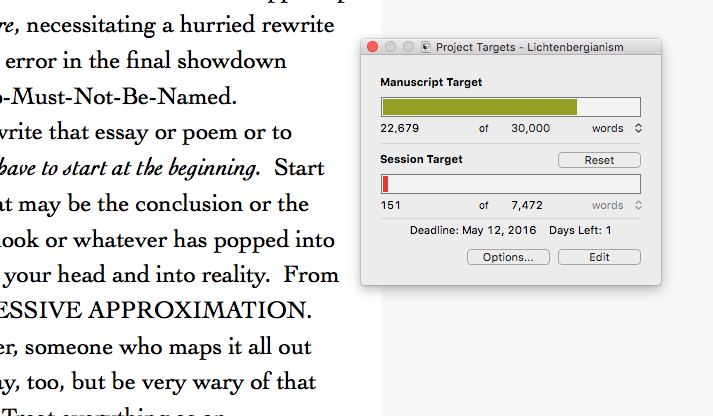First, a clarification. These are technically not “Lichtenbergian goals.” In our official ritual/agenda, they are “Proposed Efforts.” A subtle difference, and a valid distinction: if we don’t get around to doing one of them, we haven’t missed a goal. We just didn’t get around to it.
With that in mind, here are next year’s Proposed Efforts.
Lichtenbergianism
I’m carrying forward my 2016 goal to finish Lichtenbergianism: procrastination as a creative strategy and find a publisher for it. It’s just sheer laziness that prevented me from achieving that this past year. As I move forward, I will continue posting chapters to this website (although see below about Lichtenbergianism.com) and about my efforts to implement the strategies outlined in The Essential Guide to Getting Your Book Published [EGGYBP].
I will also continue building Lichtenbergianism.com, both through the blog and the introductory material.
One of the strategies in EGGYBP is to establish yourself as a speaker/workshop leader, both of which I am extremely qualified to do. I’ve already started putting out feelers and hope to start this aspect of the project soon.
Backstreet Arts writing project
Another carryover: work with Kim Ramey at Backstreet Arts on establishing a writers’ group for her audience. Basic journaling, story posters, whole books, compilations of stories—I’ll start wherever I can and go from there.
SUN TRUE FIRE
Not really a carryover, but if I’m going to compose at all, it might as well be this piece.
[REDACTED] at Newnan Theatre Company
Since it has not been officially announced, I won’t name the play I’m directing for the 2017-18 season at Newnan Theatre Company. Suffice it to say that with auditions in Jan 2018, I will spend most of 2017 preparing for the show.
For this production I am going to pull what we used to call a “full Dale” and which everywhere else is called “standard operating procedure,” i.e., full designs for costumes, sets, and lights, with individuals who are not me in charge of production. Production meetings; crew recruitment; maybe even classes to teach people how to do these things. Reach out to sewing fanatics via Jo-Ann perhaps; reach out to the artists at Backstreet; find people who aren’t involved and drag them into it.
3 Old Men
I want to continue to lead 3 Old Men, of course, but now we have another goal for the year. Burning Man’s theme for 2017 (Aug 24–Sep 4) is Radical Ritual—how can we not at least attempt to plan to go? So there’s that.
I also want to continue as Placement Lead for Alchemy and Euphoria, now that I’ve had greatness thrust upon me. Especially if we move to new land again: I want the opportunity to design a burn that becomes a home for years.
Unsilent Night
This one just developed last week when I was trying to explain the music I had used in the labyrinth for the Tour of Homes, Phil Kline’s Unsilent Night. Years ago I had tried to get in touch with Mr. Kline to see if he’d allow us to do an Unsilent Night parade in Newnan, but never heard from him. When I looked the music up to show people, I was super pleased to see that Unsilent Night now has its own webpage, and that indeed they were encouraging parades all over.
I’ve already made contact and started a Facebook group to begin planning for the event next December.
Establish a routine
I got out of a daily schedule this past summer and fall, so I want to reestablish specific periods of work each day.
Seven goals, some of which have massive subgoals themselves. We’ll see how I do.
Onward!

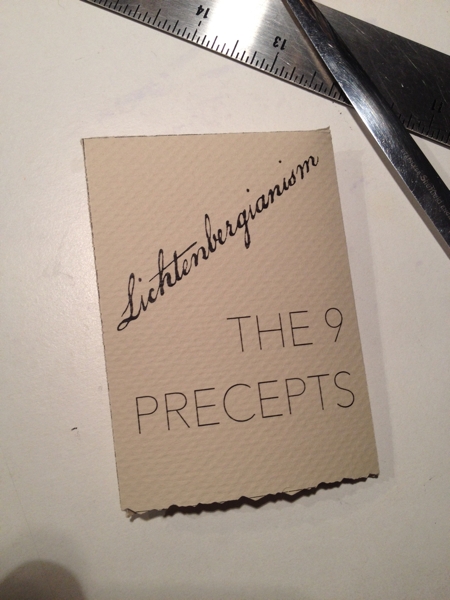

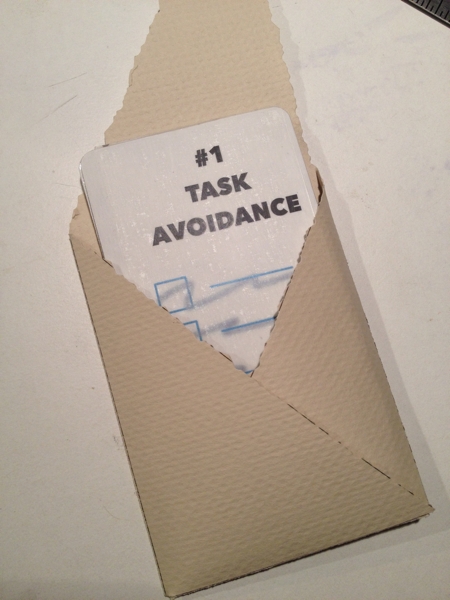

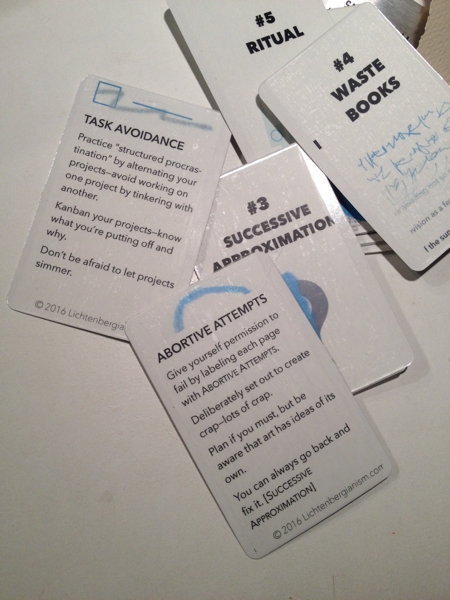
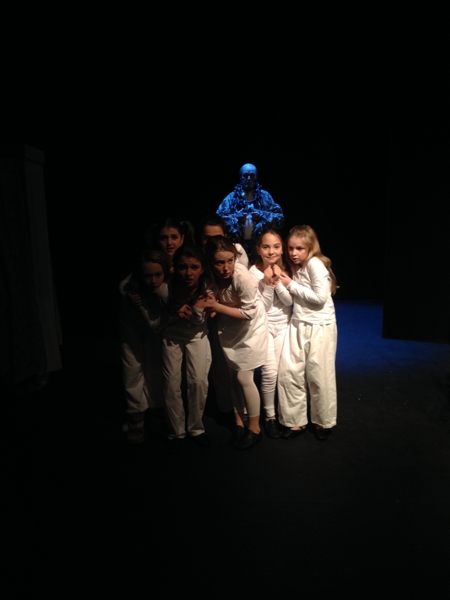 When the show opens, Natalie’s grandfather shows Jessica into Natalie’s bedroom and chats with her a moment before leaving her to wait for the other girls, who are somewhere in the huge house. When they enter, Natalie immediately begins taunting Jessica, ending in a meltdown because Jessica is holding one of her dolls.
When the show opens, Natalie’s grandfather shows Jessica into Natalie’s bedroom and chats with her a moment before leaving her to wait for the other girls, who are somewhere in the huge house. When they enter, Natalie immediately begins taunting Jessica, ending in a meltdown because Jessica is holding one of her dolls.
